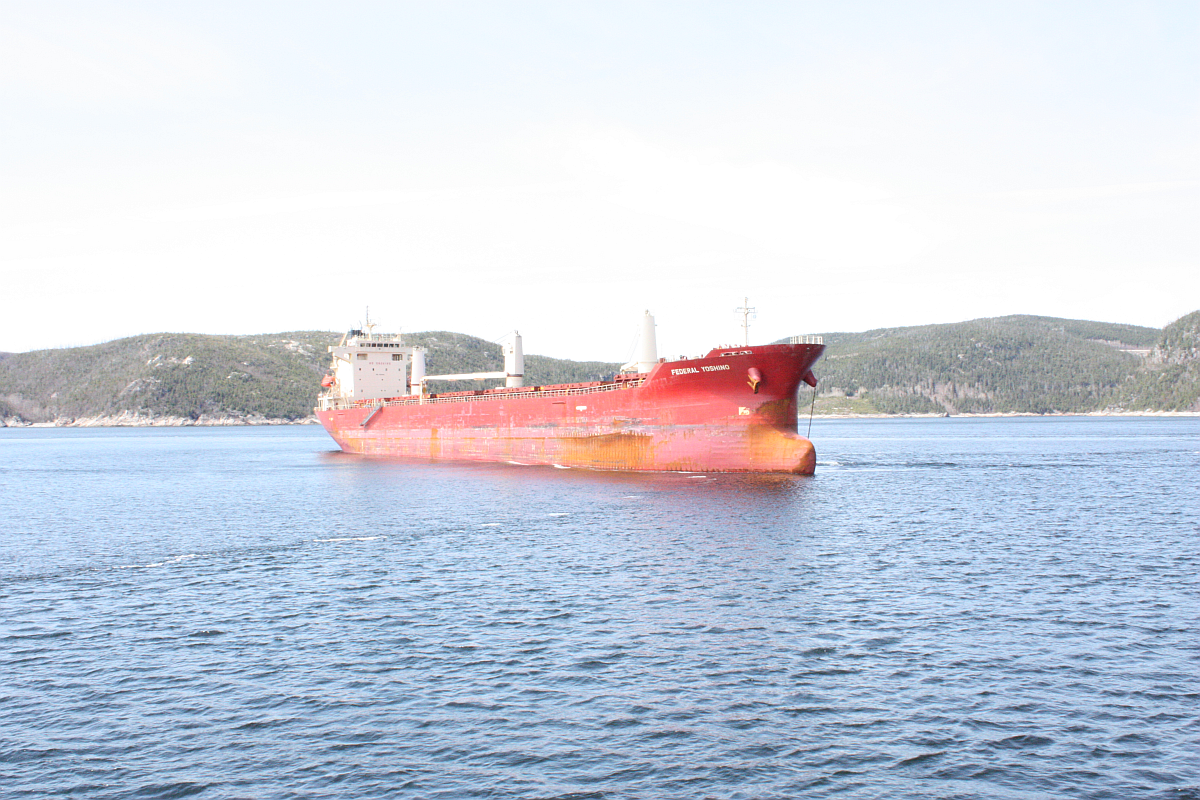Marine transportation safety investigation M13L0055
The TSB has completed this investigation. The report was released 1 May 2014.
Table of contents
Accidental death
Bulk carrier Federal Yoshino
Baie Comeau, Quebec
The occurrence
On , at 1455 Eastern Daylight Time, the Federal Yoshino was at anchor in Baie-Comeau, Quebec, when one of the vessel’s crew members was fatally injured as a result of a fall. The crew member had been working aloft using a steel basket attached to the on-board electric provision crane when the hoisting cable parted. The basket containing the crew member fell approximately 5 m before landing on the deck. The crew member was transported to the hospital and pronounced dead on arrival..
Media materials
Deployment notice
Transportation Safety Board of Canada deploys a team to Baie Comeau, Quebec, to investigate an incident involving the MV Federal Yoshino
The Transportation Safety Board of Canada (TSB) is deploying a team of investigators tomorrow morning to Baie Comeau, Quebec, to investigate a death of a crew member that occurred yesterday on board the MV Federal Yoshino. The TSB will gather information and assess the occurrence.
Investigation information
Map showing the location of the occurrence
Investigator-in-charge

Captain Pierre Giroux has been a senior marine investigator at the Transportation Safety Board of Canada since 2011.
Prior to joining the TSB, Captain Giroux worked as a ship inspector with Transport Canada's Marine Safety program for 22 years. He has extensive experience in inspections, accreditation exams and certification.
In addition, he has 16 years of sailing experience aboard chemical tankers, bulk carriers and general cargo and container vessels. Captain Giroux graduated from the Institut maritime du Québec. He holds a Master Mariner's certificate.
Photos
Download high-resolution photos from the TSB Flickr page.
Class of investigation
This is a class 3 investigation. These investigations analyze a small number of safety issues, and may result in recommendations. Class 3 investigations are generally completed within 450 days. For more information, see the Policy on Occurrence Classification.
TSB investigation process
There are 3 phases to a TSB investigation
- Field phase: a team of investigators examines the occurrence site and wreckage, interviews witnesses and collects pertinent information.
- Examination and analysis phase: the TSB reviews pertinent records, tests components of the wreckage in the lab, determines the sequence of events and identifies safety deficiencies. When safety deficiencies are suspected or confirmed, the TSB advises the appropriate authority without waiting until publication of the final report.
- Report phase: a confidential draft report is approved by the Board and sent to persons and corporations who are directly concerned by the report. They then have the opportunity to dispute or correct information they believe to be incorrect. The Board considers all representations before approving the final report, which is subsequently released to the public.
For more information, see our Investigation process page.
The TSB is an independent agency that investigates air, marine, pipeline, and rail transportation occurrences. Its sole aim is the advancement of transportation safety. It is not the function of the Board to assign fault or determine civil or criminal liability.
